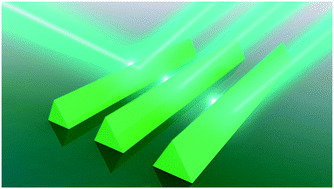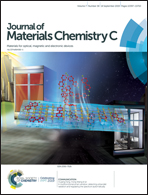CsPbBr3 interconnected microwire structure: temperature-related photoluminescence properties and its lasing action†
Abstract
Inorganic perovskite CsPbBr3 is a promising material for the next generation green-wavelength light-emitting devices. In this paper, we report the temperature-dependent photoluminescence properties of the CsPbBr3 microstructure fabricated by a vapor phase transport method. The temperature-dependent photoluminescence emission spectra show blueshift when the temperature increases from 10 K to 150 K, and then redshift from 150 K to room temperature. The shift in PL demonstrates the collaborative effect of thermal expansion and carrier–phonon interaction. Temperature-dependent time-resolved photoluminescence demonstrates that the PL lifetime increases with the temperature due to exciton thermal dissociation. In addition, lasing action was observed in the trianglular CsPbBr3 microstructure. The results reveal the thermal effect on the carrier recombination, and indicate that the CsPbBr3 microstructure has potential application for microlasers.



 Please wait while we load your content...
Please wait while we load your content...